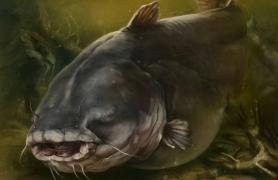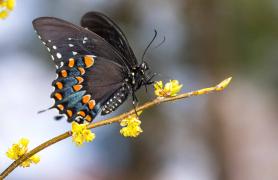Prairie Milkweed | Asclepias hirtella
Status
Common
Size
1–3 feet
Distribution
Northwestern two-thirds of the state Prairie milkweed, also known as tall green milkweed, is a perennial herb. Its small, delicately purple-tinged flowers bloom from May through August in round clusters. Its distinctive stalk, filled with milky sap, has an interesting geometry, with crowded arrangements of narrow, lance-shaped leaves. Like most other milkweeds, prairie milkweed bears pods, holding numerous seeds, each with a parachute of silky hairs.
Ecosystem Connections
Prairie milkweed serves as an important food source for many insects. Monarch butterfly larva consume the plant’s sap, which makes them unpalatable to predators. Many bees, skippers, and other species of butterflies drink nectar from the flowers, and crab spiders often hide in the clusters, hunting them.
Did You Know?
Prairie milkweed, with its subtle colors yet exciting round floral clusters, can be a showpiece in native wildflower gardens. In its preferred habitat of prairies, glades, and pastures, prairie milkweed blooms can resemble bursts of fireworks. Once renowned for medicinal purposes, milkweeds are now being planted to help the declining monarch population.
Discover more nature at mdc.mo.gov/field-guide


Also In This Issue


This Issue's Staff
Editor - Angie Daly Morfeld
Associate Editor - Larry Archer
Staff Writer - Bonnie Chasteen
Staff Writer - Heather Feeler
Staff Writer - Kristie Hilgedick
Staff Writer - Joe Jerek
Art Director - Cliff White
Designer - Shawn Carey
Designer - Les Fortenberry
Designer - Marci Porter
Photographer - Noppadol Paothong
Photographer - David Stonner
Circulation - Laura Scheuler






















